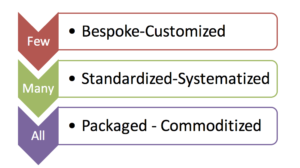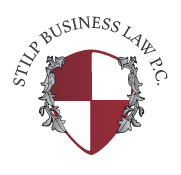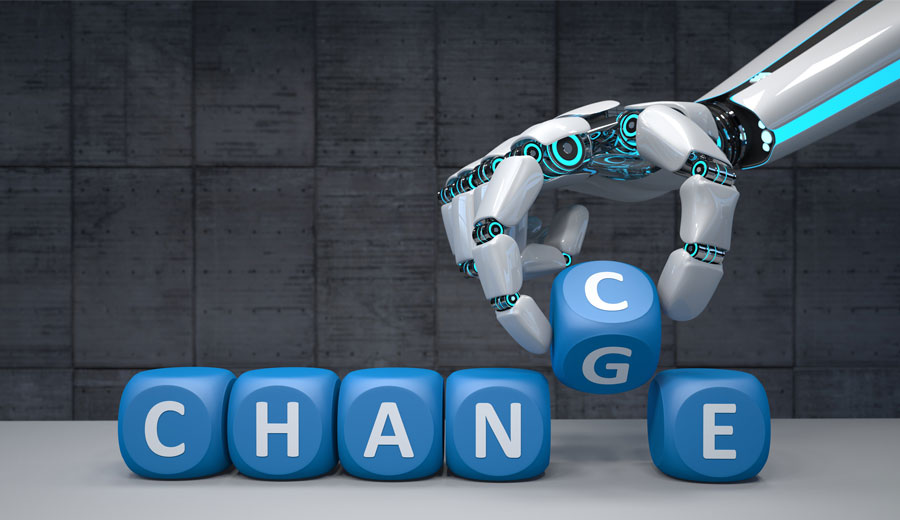Thomas Stilp, JD, MBA/MM, LLM, MSC
Fear that automation would replace human beings has been around from the industrial revolution to the computer age. In the 1950s, General Electric ran ads reminding people that robots replace “drudgery—not people,” and IBM assured hysteric business managers who feared being replaced that “computers can only do what they are programmed to do.” (“Will You Lose Your Job To A Robot?” The Week, 9/27/19.)
In the last edition of In the Loop, we discussed the evolution of services from those customized for particular client issues, to pre-packaged, bottled services that are like fruits and vegetables at the supermarket, pre-packaged and delivered on the internet as cheaper, more generic, offerings.

(Adopted and modified from R. Susskind, The End of Lawyers: Rethinking the Nature of Legal Services, Oxford Univ. Press).
Change brings contributions to the availability of legal services, with a multitude of offerings on the internet. With the commoditization of legal services, “law is no longer the exclusive province of lawyers.” (M. Cohen, “What’s A Lawyer Now?” retrieved at www.forbes.com/sites/markcohen /2019/09/23/whats-a-lawyer-now).
Yet, until Judges and Juries become robots, law practice is still a people-to-people service. Good attorneys are in the persuasion business. In 30 years, we’ve taken over 150 cases to trial. In the same time, we’ve completed over $100 million in transactions for our clients. The old maxim that there is no “deal” until money changes hands reflects the simplicity of any transaction but ignores the intricacy of its accomplishment. Trials and transactions, especially in business, should always be a people-to-people oriented service.
As trusted legal counsel, we’ve represented businesses, professionals and entrepreneurs for over 30 years.



